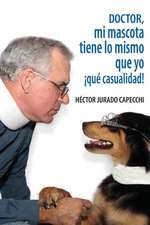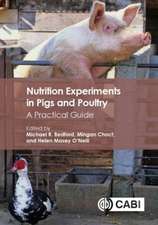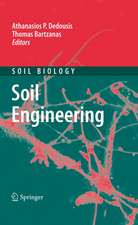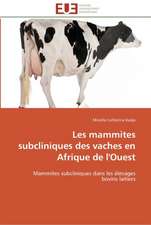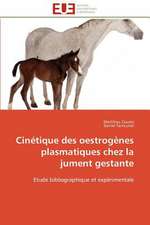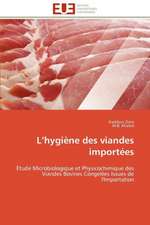Technology for Environmentally Friendly Livestock Production: Smart Animal Production, cartea 1
Editat de Thomas Bartzanasen Limba Engleză Hardback – 15 apr 2023
This volume compiles state-of-the-art scientific knowledge on the technologies that are used to quantify and reduce the environmental impact of livestock production in the cattle, pig and poultry industries. It makes a serious statement about how such technology can contribute to the sustainability of the livestock industry in the future.
As the global livestock sector is growing, modern farm animal production is increasingly regarded as a source of solid, liquid, gaseous and dust emissions, which can be both nuisance and environmentally harmful. In light of hardening regulations and social pressure, there is increasing interest in scientific research on air pollution and emissions from livestock operations.
The present chapters focus on methodology improvement, harmonization of measurements, and modeling aspects. Key aspects, such as renewable energy sources, nutritional approaches to reduce enteric methane emissions, technical options for manure management, and the use of sensors, are covered. By sharing good practices, this book is a valuable reference for a diverse readership. Experts across the veterinary and animal sciences, agricultural engineering, the food industry and sustainability research will benefit from the findings.
Preț: 1291.72 lei
Preț vechi: 1359.71 lei
-5% Nou
Puncte Express: 1938
Preț estimativ în valută:
247.16€ • 258.76$ • 204.52£
247.16€ • 258.76$ • 204.52£
Carte tipărită la comandă
Livrare economică 05-19 aprilie
Preluare comenzi: 021 569.72.76
Specificații
ISBN-13: 9783031197291
ISBN-10: 3031197291
Ilustrații: VIII, 308 p. 1 illus.
Dimensiuni: 155 x 235 mm
Greutate: 0.62 kg
Ediția:2023
Editura: Springer International Publishing
Colecția Springer
Seria Smart Animal Production
Locul publicării:Cham, Switzerland
ISBN-10: 3031197291
Ilustrații: VIII, 308 p. 1 illus.
Dimensiuni: 155 x 235 mm
Greutate: 0.62 kg
Ediția:2023
Editura: Springer International Publishing
Colecția Springer
Seria Smart Animal Production
Locul publicării:Cham, Switzerland
Cuprins
Notă biografică
Thomas Bartzanas is Associate Professor at the Agricultural University of Athens and Director of the Lab of Farm Structures. His teaching and research interests focus on the development and application of smart technologies in controlled environment production systems, the sustainable use of natural resources and the assessment of the environmental impact throughout the agricultural production chain. Thomas serves as vice-chair in the Section II “Structures & Environment” Committee of CIGR, and as an expert member of the Scientific Council of the European Union, in the Directorate for Research and Innovation for open access to research results in the field of "Agricultural Sciences". He is Chair of the Hellenic Union of Agricultural Engineers of Greece and CEO and Chairman of the Board of the smart farming Competence Center (SmartAgroHub S.A) in Greece.
Textul de pe ultima copertă
This volume compiles state-of-the-art scientific knowledge on the technologies that are used to quantify and reduce the environmental impact of livestock production in the cattle, pig and poultry industries. It makes a serious statement about how such technology can contribute to the sustainability of the livestock industry in the future.
As the global livestock sector is growing, modern farm animal production is increasingly regarded as a source of solid, liquid, gaseous and dust emissions, which can be both nuisance and environmentally harmful. In light of hardening regulations and social pressure, there is increasing interest in scientific research on air pollution and emissions from livestock operations.
The present chapters focus on methodology improvement, harmonization of measurements, and modeling aspects. Key aspects, such as renewable energy sources, nutritional approaches to reduce enteric methane emissions, technical options for manure management, and the use of sensors, are covered. By sharing good practices, this book is a valuable reference for a diverse readership. Experts across the veterinary and animal sciences, agricultural engineering, the food industry and sustainability research will benefit from the findings.
Caracteristici
A valued contribution to reducing greenhouse gas emissions and ammonia from livestock buildings Broad coverage from renewable energy integration to legal requirements Includes the impact of applied diets, prevailing microclimate and ventilation schemes


